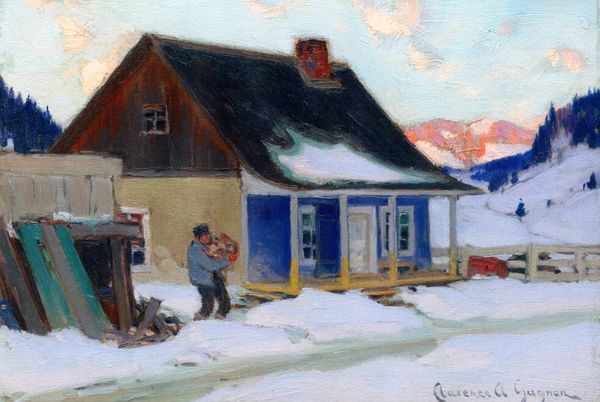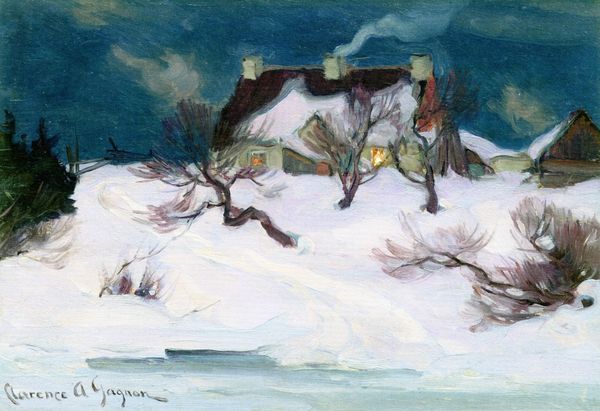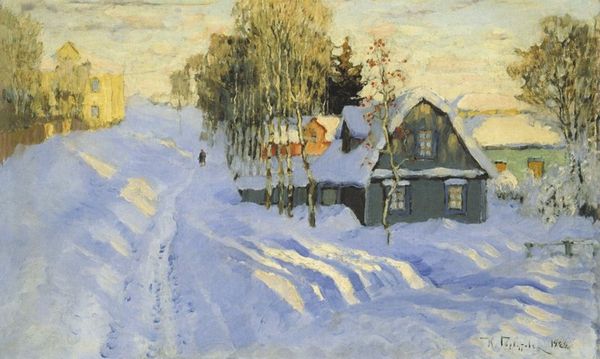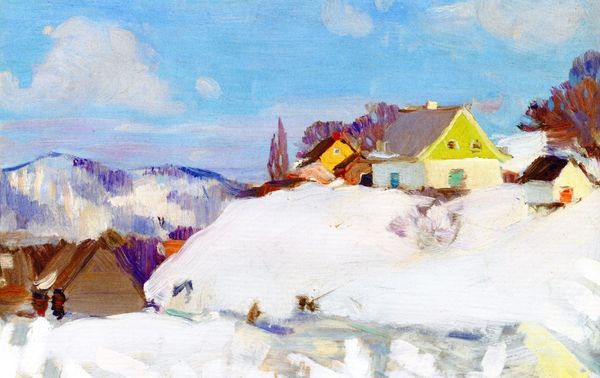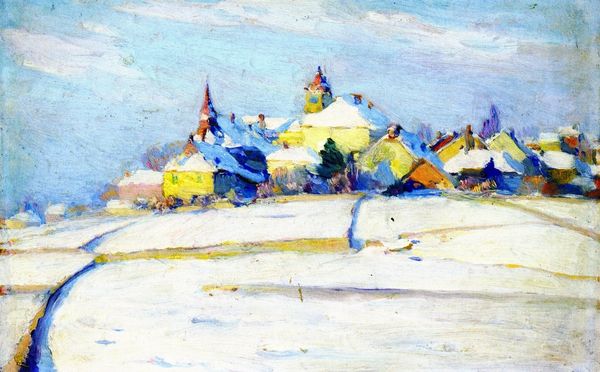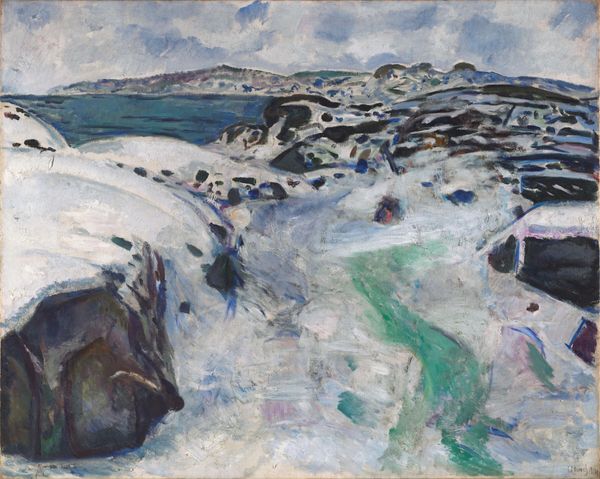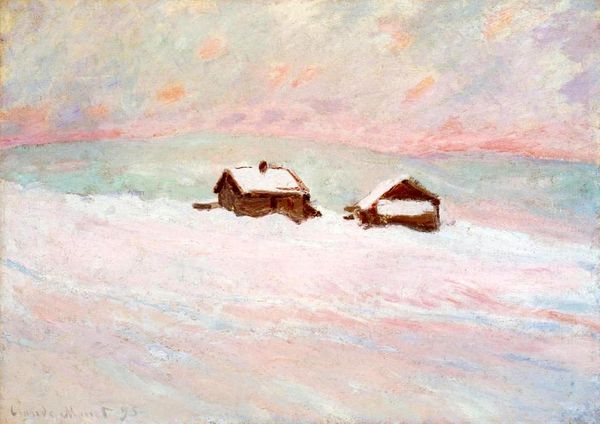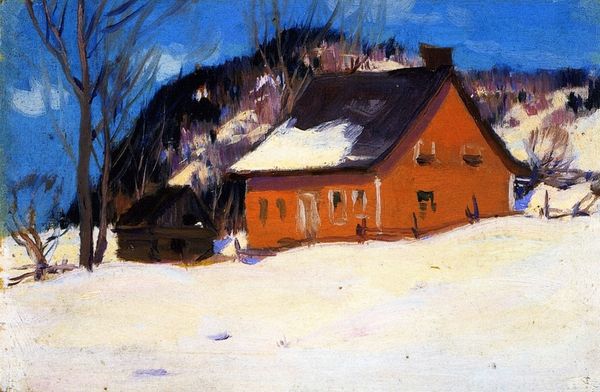
plein-air, oil-paint
#
plein-air
#
oil-paint
#
landscape
#
winter
#
impressionist landscape
#
oil painting
#
expressionism
#
expressionist
Copyright: Public domain
Editor: Clarence Gagnon's "The Ice Harvest," painted in 1923, offers an intriguing snapshot of rural life. The thick, almost sculptural use of oil paint is striking, and makes me wonder about the conditions and physical demands of ice harvesting itself. What can we discern about the labor involved simply by observing the materiality of the piece? Curator: That’s an insightful starting point. Think about the ‘plein-air’ tag – the artist painting outdoors, directly confronting the elements, mimicking in a way the labour of the workers portrayed. Gagnon's use of thick paint suggests not just the physicality of the landscape but also, perhaps, echoes the manual exertion inherent in extracting ice. What details in the painting lead you to that connection? Editor: The deliberate, almost chunky application of the paint, particularly in rendering the snow and the figure working… it doesn’t feel delicate. It communicates the weight and effort involved. Also, I’m curious about how this piece sits within Gagnon’s wider body of work. Curator: Indeed. Gagnon often depicted scenes of Canadian life, and we can look at this work as being within his project to construct an idealized vision of the Canadian landscape that would serve emerging tourism and nation-building interests in the early 20th Century. How might the ‘Ice Harvest’ speak to themes of both industry and the picturesque? Editor: So, the romanticism is layered on top of something much more grounded and gritty. Thinking about the marketplace and its impact complicates that initial feeling of serenity that the snow gives. Curator: Precisely. The picturesque aesthetic, achieved through distinct application of oil paints, overlays a socio-economic reality. It reminds us that how an image is made and circulated has concrete implications in the world. Editor: I’m beginning to see that what at first appeared to be a purely scenic depiction is deeply intertwined with the processes of production, representation and the market forces influencing both Gagnon’s vision and Canada’s image. Curator: And the materials of art become a lens through which to understand that complex interplay! It's a nice reminder of how deeply connected an artist is to a wider ecology of labour, consumption and visual rhetoric.
Comments
No comments
Be the first to comment and join the conversation on the ultimate creative platform.
